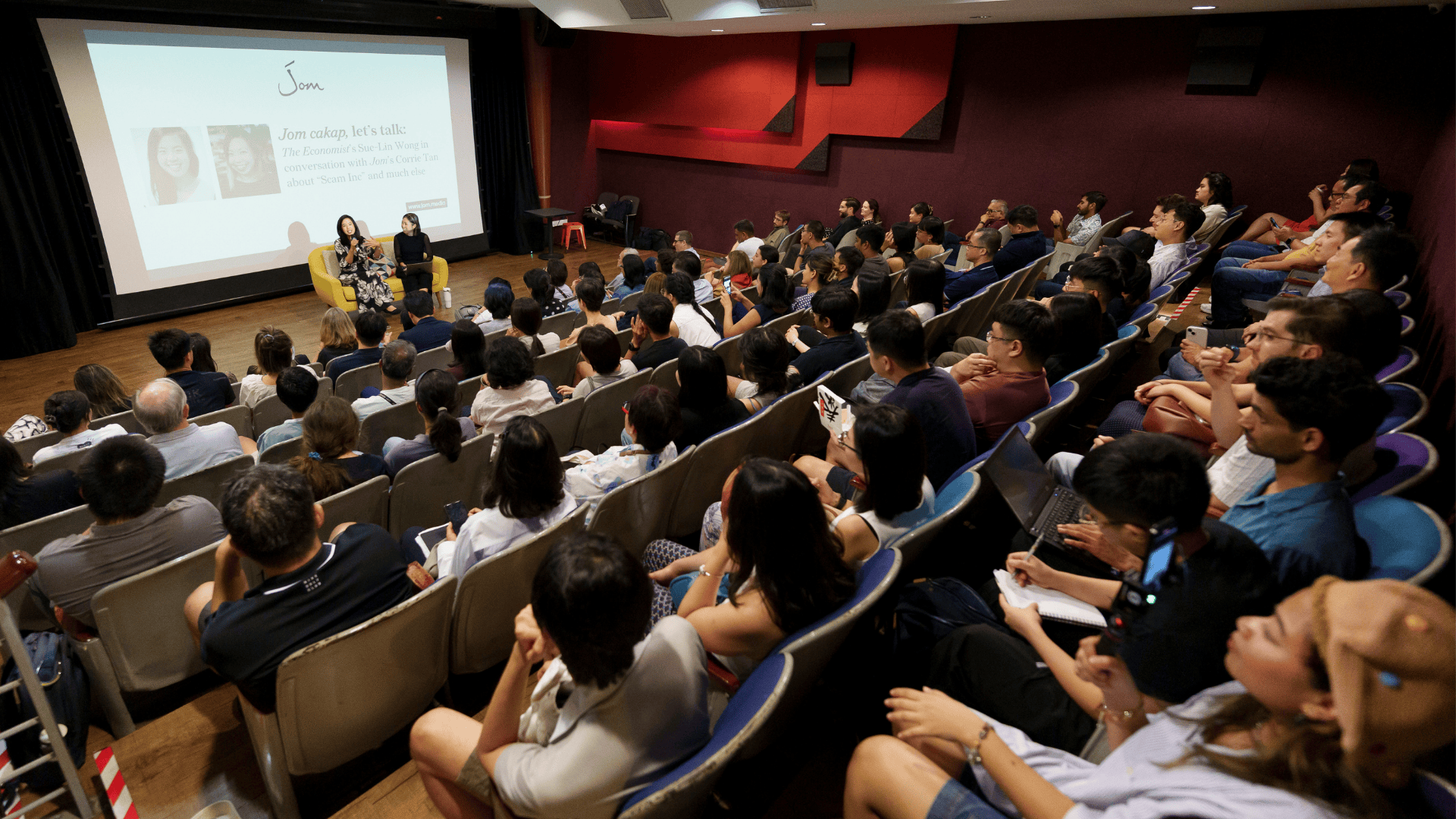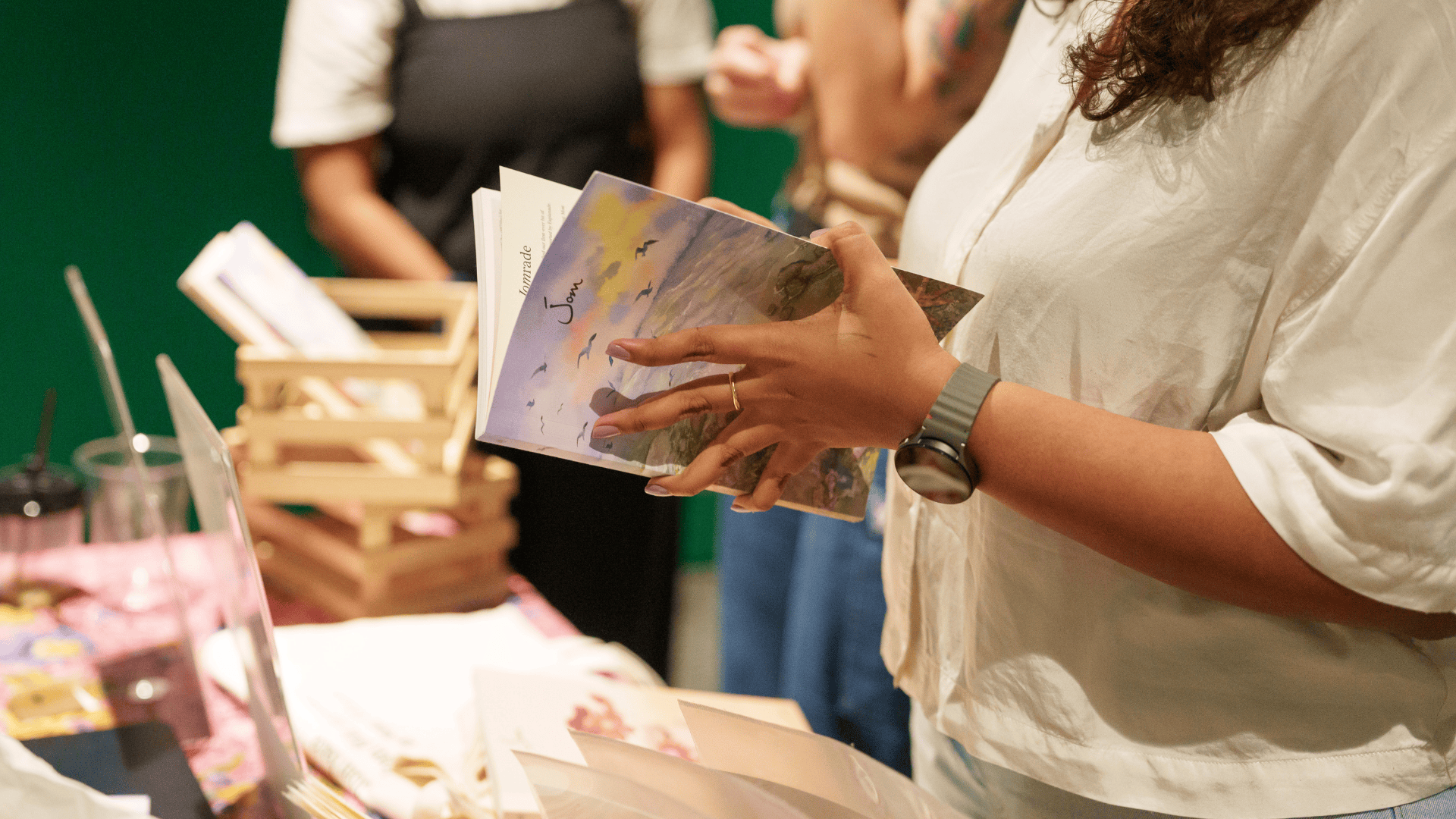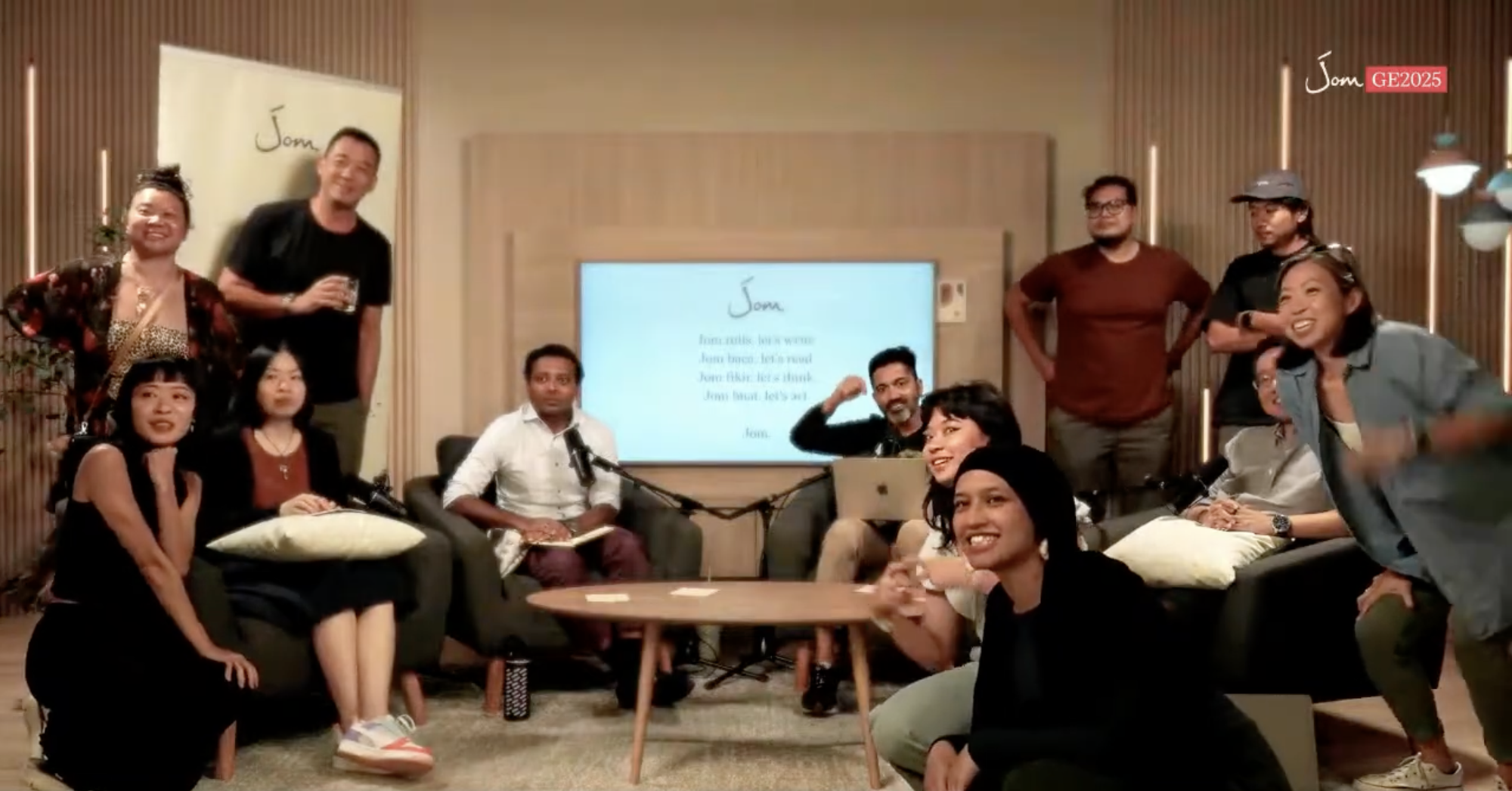We conducted Jom’s first reader survey in April 2023, eight months after launching. It was a different time for Singapore. We had a different prime minister and president, the Ridout Road saga was just erupting, Shanti Pereira wasn’t a household name, and KF Seetoh hadn’t yet fully emerged as the dogged defender of hawkers he is today, a struggle that encapsulates broader issues such as inequality and spiralling rents. The world was a different place too. Donald Trump was far from office, and the latest bout of carnage and horror in Israel and Palestine was months away.
At Jom, we’ve tried our best to keep up, and help you process all this, in line with our mission, “to inform and delight with slow journalism, grounded in humility and sensitivity, and guided by the never-ending quest for truth.”
Jom, of course, was also a different organisation then. Our team has since grown from 5 to 10 people. Our overall membership base has increased from over 3,000 to over 8,000; while paying members have risen from 878 to around 2,000. We listened to your early requests, and introduced “Letters to the editor” and “A flavour of Jom”, which offers non-paywalled essays for those who’re still pondering a paid membership. Your support has helped us through a number of other milestones since:
- May 2023: Our first live event (at, gulp, The Projector)
- July 2023: Our first (and hopefully only) POFMA
- Aug 2023: Our first round of endorsements by public figures
- Oct 2023: Our first print issue
- Jan 2024: Our first coaching gig, at the Singapore American School
- July 2024: Our first sponsored newsletter, by Esplanade
- Oct 2024: Our first voter sentiment survey
- Feb 2025: Our first university coaching gig, at NUS’s Asia Research Institute
- July 2025: Our first local school speech, at RGS
- July 2025: Our first public validation by an establishment figure, in a book (more below)
…and of course, our first general election, in May this year. The team worked overtime during GE2025, delivering daily dispatches, video and text essays, a quiz and an election night live stream—and you, our Jommunity, kept us going. You read and watched our content, engaged in conversations, and we saw our best-ever month in terms of new paid memberships. All of this made it a perfect time to conduct our second survey.
About the survey. We ran it from August 6th to 25th 2025. We received a total of 343 responses: 214 paid members; 104 getting our free newsletter only; and 25 members of the public. For the survey geeks out there, given that Jom’s paying membership base is around 2,000, that group’s response rate gives a 6.3 percent margin of error at a 95 percent confidence level. (Higher for the others.) Unless specifically specified below, survey response percentages refer to the entire universe of 343 respondents.
Read on, to find out more about the others in this shared space of ours.
Our questions for you
How and why did we all gather here?
More than 50 percent of respondents first heard of Jom through social media, while another 30 percent through word of mouth.
For paying readers, these were their main motivations for doing so:
- To support independent media in Singapore (97 percent)
- I want alternative views to what the mainstream media offers (86 percent)
- The product itself; I enjoy your journalism (67 percent)
- I want political change in Singapore, and believe supporting Jom is one way (48 percent)
For non-paying readers, these were main reasons holding them back:
- I have too many subscription products already, can’t keep up (36 percent)
- It’s too expensive for what I can afford (30 percent)
- It’s unclear what the added benefits are (15 percent)
Support for independent media and alternative views is our lifeblood. We’re gratified that this is why people pay for us. It’s Jom’s raison d’etre: “We believe that a rich, diverse media sector is crucial for the functioning of democracies and their economies. Yet Singapore’s is woefully underdeveloped. There is currently no publication that both delivers regular, quality journalism, and that is also not beholden to particular political or corporate interests.”
Incidentally, both reasons exhibit markedly higher support than in 2023, which indicates that we’re moving in the right direction, in terms of alignment between our stated purpose and paying members’ perceived value.
You don’t have to keep up, it’s not completely about the product. Just two-thirds of paying members give us their money for the product itself. Of course, we’d love it if every single one of you loved every single word we publish. But we’re all drowning in information, struggling to keep up with the next article, book, or podcast recommendation. We know that many of you pay to ensure we exist. Even if you can’t read us every week, you want to know we’ll be there the next time there’s a scandal, war, election, or Singaporean world pool champion.
We hope that the one-third of non-paying members who’re resisting a paid membership because they’re overloaded consider this. You don’t have to keep up.
The indie media in Singapore is (for now) associated with political change. Some 48 percent of paying members believe supporting Jom is one way to enact political change. Even though it’s about half the segment that broadly wants to support indie media (97 percent), it’s a significant minority. And it’s likely a symptom of the natural bias and attendant polarisation in Singapore’s media industry.
The mainstream media (MSM) gobbles up public resources, is protected and favoured in the marketplace, and has a pro-PAP bias in its coverage. There’s a natural tendency, then, for independent media channels—meaning, among other things, those not dependent on the government for revenue—to criticise the mollycoddled PAP when we believe it’s justified. Our role is not to be media sycophants. By that same token, opposition politicians and others who are given insufficient attention by the MSM tend to look to indie media for coverage. It’s easier for the MSM to “access” the ruling PAP and the government; and, conversely, sometimes easier for indie media to access many opposition parties.
And so we profile opposition politicians and offer them space to pen editorials that the MSM wouldn’t carry. One of our values is diversity, including that, “[e]xternally, we strive to shine a light on issues and personalities typically under-represented in the media.” It’s in a similar vein that we analyse issues like Singapore’s ties to Israel, and the death penalty. Jom, in other words, is deliberate and intentional about sharing stories and viewpoints that you wouldn’t otherwise hear.
We have also reached out to the PAP, offering them space for their own writing. (They’ve yet to respond.) We’ll continue to do so, and also invite them for interviews. In our view, Singapore is in the middle of a long MSM-indie media transition. We look forward to the day when the government offers access and resources to all media channels, not just the ones favoured by one party. True media diversity, which involves encouraging contrarian views on parties, politicians and policies, will help Singapore progress.
Till then, we will have to contend with this bifurcated media landscape, and be wary of the way it influences our editorial. Several of you have criticised what you believe is our overly acerbic writing about the government. (See “What don’t you like about Jom?” below.) We strive to be fair, but will reexamine our biases and how they might affect our work.
Who’s in our Jommunity?

“A great deal of what’s online is of little value, just rants. But there are serious-minded sites like Jom.”
- Cheong Yip Seng, former editor of The Straits Times, in Ink and Influence: An OB Markers Sequel
Jom is read across the professional and political spectrum. We were pleasantly surprised to see Cheong’s comment in his latest book. It offered some public validation for what we’ve known internally—Jom is read by a wide spectrum of people, from artists, activists, entrepreneurs, and social workers to civil servants and politicians, including former ministers and current MPs.
The survey indicates that eight out of 10 Jom readers are aged 25-54. A similar proportion have completed undergraduate or postgraduate studies; and, likewise, some 80 percent are based in Singapore.
Your annual income is varied, with a quarter or so earning below S$25,000, another quarter above S$200,000, and everyone else in between. We’re especially indebted to the almost nine percent of paying members who earn below S$25,000 a year. Perhaps some of you are retired. Still, we know you’re running down some bucket to support Jom. Thank you all for spending your hard-earned, limited funds on us.
Jom’s readers tend to follow legacy rather than younger media channels. CNA (70 percent), The New York Times (45 percent) and The Straits Times (44 percent) are the most popular other publications amongst Jom’s readers, with CNA the only one read by a majority. It’s a similar finding to 2023. It surprised us then because we imagined there’d be more overlap with local upstarts such as Rice Media and New Naratif. Instead, under a third of Jom readers follow Rice, a similar proportion that reads The Economist.
Jom’s paying members also have a marked preference for ST (43 percent) over Mothership (34 percent). Note that in broader society, it’s the inverse: Mothership is now more widely read than ST.
Finally, you also hang out online on Instagram and Facebook much more than Tiktok or Twitter/X. While we’ll continue to focus on the former two, then, we’ll also keep exploring the potential of the others. If you have any views on this—Jom’s content on TikTok?—do share.
What do you think about our content?
Recall that every Friday, we publish three pieces of journalism: a newsletter, a weekly update, and an essay. The free newsletter includes our editor’s personal observations about Singapore and Jom. The two pieces of paid content are “Singapore This Week”, our opinionated update on our city, and the essay.
Think of “Singapore This Week” as your scan at the end of the work week; and the essay as your Saturday-morning-over-coffee read. Each should appeal to a different part of your intellectual and literary soul.

“Singapore This Week” has become a staple for many of you. Some 87 percent of paying members and 69 percent of those on the free tier read it consistently. And over 90 percent of both groups believe it is useful in helping you understand Singapore.
“Politics” and “Society” are by far the most popular categories, and well over 80 percent believe the length of each blurb is “about right”.
We’re gratified. STW is our one somewhat standardised “product”, with a fixed format, fairly consistent topics, and a slightly heavier stylistic editing hand. It might therefore seem like a more basic offering, but a lot of work goes into it. Every Wednesday, our STW engine whirs into action: reviewing stories, curating, assigning, researching, writing, and finally editing. It’s a process that we sometimes initiate on a Friday morning, if there’s been a major news story—the engine whirs more rapidly.
STW is meant to complement, not compete with, daily news. What it offers is news analysis and opinion—helping you, on a Friday afternoon, make sense of the headlines that have flashed by. Whether you’re in your office, wanting an update before you head out for dinner, or a Singaporean living in the US, eager for your weekly dose of local affairs, we’re happy that it’s serving a purpose in your life.
How can we bolster it? When asked what you’d like to see more of in STW, over 40 percent indicated “Justice/The Courts” and “International”. We’ve heard you, and will slowly start doing more in those areas—conscious also that about a fifth of you think it’s long enough already.
Our newsletter is slightly less popular though still widely read. Some 68 percent of paid members and 71 percent of those on the free tier say they read it consistently. Like STW, some sections are more popular than others—editor’s personal musings, the selected STW blurb, and the description of the weekly essay are your favourites—while well over 80 percent of you believe the newsletter’s length is “about right”.
We were surprised that only a minority of you—38 percent of paying members, less so for others—enjoy our “build-in-public” passages about Jom’s growth and development. Comments in the survey and anecdotal evidence suggest that many of you appreciate our transparency and the opportunity to “peek under the hood”. We’ll continue gathering feedback to calibrate our messaging—maintaining transparency without overwhelming you with operational granularities.
What do you want more of? Current affairs and staff recommendations (eg movies, books, podcasts). We’ve heard you; look out for both.

Our essays are consistently read only by a minority of you. Some 39 percent of paid members read them consistently, while 47 percent of those on the free tier read those outside the paywall consistently. Politics, Society, and Culture are the three most popular essay categories.
One issue might be lengths. While 77 percent say they’re “just right”, a not insignificant 22 percent believe they’re too long. One thing we probably have to get better at is modulating length between essay topics—not feeling the need to overextend with every one, but being more judicious in deciding which topics deserve a larger canvas. We’re also going to start running shorter commentaries more often.
Another issue might be the lack of topic diversity. We publish just one essay a week. As much as we try to frame topics in an interdisciplinary way, each essay might appeal only to political buffs or artists. Sadly, there’s little we can do about this in the short term. We all know what the long-term goal is—a magazine that regularly publishes deep pieces on a range of topics: arts, culture, earth, food, politics, technology, and more.
But how do we get there? We’re constrained in our growth by several factors, including money, time, and talent. Good think pieces take time, and there aren’t that many experienced writers out there who can spare it. So Jom is deeply engaged in a long process of working closely with writers and striving to raise contributor rates, part of a larger mission to help nurture Singapore’s journalistic scene.
We look forward to the day when you receive Jom on a Friday, and immediately feel attracted to one of the many essays, and also stumble upon a non-intuitive one that you end up liking. Thanks for your patience as we build this together.
We also asked whom you think we should profile next in our essays. There’s much interest in non-political members of the establishment—like a high court judge–-and newer politicians, both PAP and opposition. By contrast, you have less interest in profiles of older politicians, entrepreneurs, and sportspeople.
How else can we improve our content and offering?
You want us to respond to urgent issues via social media. We asked what more we can do on social media. While about a third of you were keen on video summaries of “Singapore This Week”, by far the most popular request, from almost 70 percent of paid members, was hot-takes on societal issues.
This touches on two questions we’ve grappled with from the beginning. First, Jom is a weekly—but what if you need to hear from us in between? In the digital age, traditional weeklies like The Economist and The New Yorker have widened their offering to incorporate more daily content, whether quick articles on their websites or daily, morning newsletters.
We don’t have their resources, and we don’t want to clog your inboxes. Perhaps at some point we’ll diversify our newsletter offering, so that Jom has, say, a Singaporean politics newsletter, and maybe a daily update newsletter. Till then, social media posts seem to be the most effective way to communicate with you between Fridays.
But the other question concerns “hot-take”, which at first glance is incompatible with slow journalism. That’s the other tension we face—how to be responsive while still analytical, deliberate and thoughtful. We’ll try. In fact, after we saw this finding in the early survey results, we tried a “hot-take” on a Tuesday a few weeks ago, concerning Singapore’s decision not to recognise the state of Palestine. Check it out on Facebook, Instagram or LinkedIn.

Internally, it took three of us about half a day to turn this around. We’ll continue to do so when we think our voice will add to public discourse. If ever you think there’s an issue worth our “hot-take” attention, e-mail Saki and we’ll try our best.
South-east Asian Affairs, Everyday Economics, and Political Cartoons are the columns you want. For a while we’ve been considering having regular contributing columnists. We asked for your preferences. Options ranged from Aunt Agony and Modern Love to Financial Literacy and Pop Culture.
You’ve spoken, we’ve heard you, and very soon we’ll be introducing Jom’s first external columnist. Look out for her.
Regular explainer videos are the most important form of video content for you. Almost two-thirds of you are keen on more explainer videos, akin to what we produced on inequality during the GE, and on migrant workers shortly after.
By contrast, only a minority of you want Jom to start a regular video podcast show (like The Daily Ketchup) or host occasional livestreams, like we did during GE. Livestreams are the second most popular—46 percent of paid users want them—so we’ll try and do a few on specific occasions, but aside from that we’ll focus our video bandwidth on explainer videos.
You want the ability to “gift” essays but don’t need a new login system or Jom app. Some 60 percent of you want to be able to “gift” your friends Jom essays. We understand. This will allow you to bond over content with your pal, and also serve as an introduction to Jom for them.
When we first started, we were a bit skeptical about such a feature cannibalising our paid memberships. But now that we have three years of content, we’re a little less concerned. We’ve begun research into implementing this, though it seems like it’s not a straightforward fix. We’ll keep you posted.
By contrast, only a minority of you want a comments section (43 percent), a regular password login to replace the current e-mail login (33 percent), or a mobile app (21 percent). We’re going to look into a comments section, but not the other two.
Yes, there is a vocal minority of you who’ve long had trouble with our e-mail login system. We’ve heard you, and in many cases, have offered telephone support. We now have a Help & Support page too with responses to common queries; and our community manager, Zaid, is on hand for individualised requests. Please e-mail him anytime.
In the long-term we’ll likely transition to a password system. But for now, given that we’re still losing money and have to prioritise our technology spend, we’ll wait. Thanks, again, for your patience.

What do you like about Jom?
A selection:
“It’s not fluffy and light. Transparent. Fabulous alternative to the national narrative.”
“It is the only prominent independent media platform in Singapore with regular reporting and long form essays covering people and issues unreported elsewhere.”
“When I want to know what ‘really’ is happening in Singapore, I trust Jom the most on that.”
“Your criticality, how stories take pre-PAP and pre-colonial history into account, heterodox economics.”
“You can tell the writers actually think and critique which is refreshing. As with all media outlets, Jom is biased in some way but you wear that bias on your sleeve.”
“When I read Jom, I feel like I am hearing the voices of Singaporeans who are more connected to ‘the ground’.”
“Genuine care and respect for the readers shown when you explain your decisions. Feels like we are growing with you.”
“Independent journalism, grounded in values. I deeply respect your commitment to slow journalism. I love your slogan. You carry yourselves with humility, and it comes through clearly in your work.”
Thank you. We feel the love. It’s hard to describe how fulfilling work is when it resonates like this. We’re lucky to do it, and we thank you for giving us the chance.
What don’t you like about Jom?
A selection:
“I appreciate the critical lens but I find the anti-establishment bias a bit too strong.”
“To praise when praise is due, and critique when there are shortcomings. The vibe seems to be that any praise is always grudgingly given.”
“Sometimes, the dismissive & flippant comments about people in authority and civil service can be off-putting.”
“It doesn’t really do it most of the time, but the danger is that it can come off as pretentious.”
“Content on the website is not very well organised. I can’t browse by genres. No menu or set of links to access all the content. To access past content, I have to keep scrolling down.”
“I can think of a couple of topics that haven’t got a full airing because maybe a full airing doesn’t fit with [Jom] staff political perspectives? As a researcher I hear all kinds of things when people have full anonymity but only parts of it are sanctioned talk for public airing. This is true of the conservatives and the liberals. And I would love for Jom to have the guts to take all sides on.”
“Rarely extends beyond the island, sometimes feels ‘provincial’ given the micro-local topics; misses the opportunity of a larger picture and of building a wider community of thoughts.”
Thank you for sharing all this. We’re conscious of our biases, some a symptom of the bifurcated media landscape we described above. We’re keen to moderate them, while preserving criticality. Jom occasionally faces criticism from opposition supporters and “the left”, amorphous as it is, for not being harsher on the government, or for not more regularly highlighting a particular societal injustice.
One of the complaints about Jom in the first survey was that it “plays safe” with our write-ups about the PAP. More recently, our post-GE2025 piece, titled “Lawrence’s stunning success”, was poo-poohed by some opposition fans. Perhaps they’d have preferred a narrative about a dark day for Singapore. That piece is outside the paywall, and we urge those curious about our biases and politics to read it.
Ultimately, our editorial positions are guided not by electoral dynamics—we don’t endorse any party—but by our own values, which are broadly to the left of the political centre. This is why, just to cite two examples, we’ve disagreed with the Workers’ Party’s stances on gay rights and the death penalty. We try our best to showcase and engage conservative arguments—and indeed, believe that Singapore will thrive with a diverse media ecosystem that includes progressive and conservative publications.
We thought you might appreciate a deeper explanation of the forces we contend with. And all that said, we’ll always strive to do better for you, our readers.
Separately, we’ll try to improve website navigation; and expand our coverage to more macro and regional topics.
Thanks again to the over 8,000 of you receiving our newsletter—sign up at the bottom of this page if you’re not on the list—and the 343 who participated in the survey.
When any being or entity grows rapidly, it sometimes forgets to look in the mirror. You’ve offered us a chance to pause, reflect, examine our constituent parts, to appreciate our achievements, and scrutinise our foibles and shortcomings. We have an even better idea now about what you want—as we build Jom together.
As our Jommunity continues to grow, our hope is to continue finding ways to include you in this journey. If you have ideas, suggestions or just want to chat, please e-mail Zaid at community@jom.media.
Till the next survey—hopefully you won’t have to wait another 30 months.

If you enjoy Jom’s work, do get a paid subscription today to support independent journalism in Singapore.







